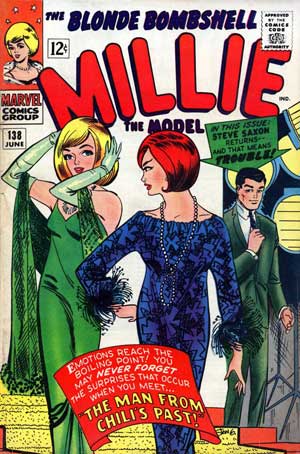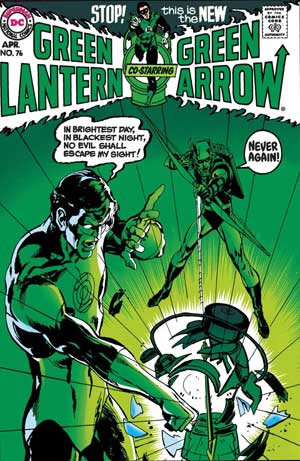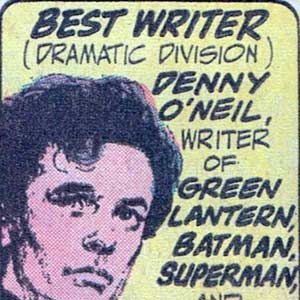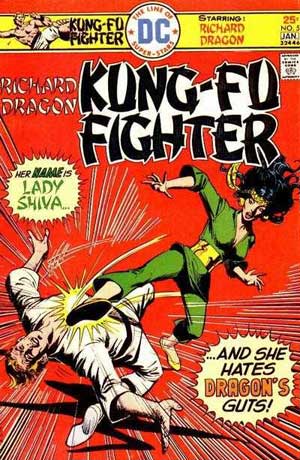Comics /
Comics News
Dennis O’Neil, Comics, and Social Justice
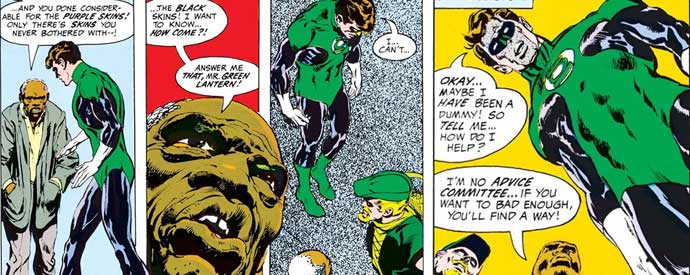
By Hervé St-Louis
June 13, 2020 - 21:10
A recent liberal arts university graduate, Denny O’Neil was hired in 1966 by Roy Thomas to replace him and Stan Lee a few secondary Marvel
Comics such as Millie (1966),
Millie the Model (1966),
Patsy and Hedy (1966),
Strange Tales (featuring Doctor Strange, 1966),
Daredevil (1966), and later few western series such as
Rawhide Kid (1966). O’Neil continued to take odd comic writing jobs at DC Comics and Charlton Comics until he was given an opportunity to make significant changes to failing and staid series at DC Comics.
O’Neil’s importance in comics was in the latter Silver Age where he revamped several important characters, aligning them to the social and cultural events of the late 1960s. His most significant work in the period was to revamp the Green Lantern series by adding Green Arrow to whom he had given a new attitude in the Justice League of America series and paired with Black Canary. The Green Lantern/Green Arrow (1970) series explored later 1960s American politics, chronicling the anti-war movement, and the Civil Rights. While today, this would paint O’Neil as a social justice warrior, he also contributed to the return of Batman (1970) to his noir detective roots by taking over comic strip cartoonist Frank Robbins’s writing duties.
O’Neil’s first challenge was to re-imagine the failing Wonder Woman (1968) series by adding a James Bond’s spy thriller vibe to the series, removing her from her fantastic and melodramatic stories where her mother ruined her mind and various versions of herself chased Steve Trevor and other boys. This Wonder Woman had no powers but fought evil as a post-modern second-generation feminist. O’Neil’s work was criticized because depowering Wonder Woman was deemed a symbol of a weakened woman for some feminists.
O’Neil also scribed the words of
Steve Ditko’s
Beware the Creeper (1968) adding a sense of conflict between the creators on the creative outlook of the series. O’Neil was very much a liberal while Ditko was a libertarian and of Ayn Rand’s objectivism. The ideological conflict between the two creators could not be more indicative of the future cultural wars in comics. O’Neil, formerly enlisted in the Navy had also graduated in English and philosophy from Saint Louis University, an old Jesuit institution that had integrated Blacks in its student body since 1944. O’Neil’s approach to society was much different from the laisser-faire attitude and determinist views of Ditko.
In
Green Lantern / Green Arrow (1970), O’Neil took a similar activist but also pragmatic position which mirrors the Jesuit university he attended. Green Arrow challenged Green Lantern about his respect for authority and convinced him that evil can lurk behind benevolent structures. Thus, Green Arrow argued that Green Lantern had to act even if it conflicted with the Guardians of the Universe’s objectives. In that series, O’Neil introduced
DC Comics’ first Black superhero, Green Lantern John Stewart. He revealed that hipster Green Arrow had unattended his own ward, Roy Harper, also known as the Emerald Archer’s sidekick Speedy, when the latter’s drug addiction was revealed. The topics tackled in the Green Lantern / Green Arrow series propelled O’Neil’s public profile.
But O’Neil was still the consummate professional capable of writing standard western comics like Kid
Cold Outlaw (1967),
Two-Gun Kid (1967),
Bat Lash (1968) or
Richard Dragon Kung-Fu Fighter (1975), often expanding on the common material and creating whole chunks of universes, such as DC Comics’ martial arts circles, and the world of eco-terrorist Ra’s al Ghul. O’Neil would reuse the world of the red-hair Irish-like Richard Dragon to train Vic Sage, the vigilante known as
The Question (1987) where he mixed some of now more mature liberal ideals with Eastern mysticism to create a character that started from Steve Ditko’s objectivism in order to change him into a hero the writer could call his own.
Although back and forth between DC Comics and Marvel Comics, it is with the former as the Batman editor that he made major contribution to the world of comics, continuing to shape Batman into a darker and grittier character that would become the most popular hero a the publisher. O’Neil mixed liberal politics with comics plentifully to the extent that this perspective seems to have become the default one in comics and is only challenged today by movements like Comicsgate who often forget that comic books and comic strips have always been political. This is Dennis O’Neil’s legacy.
Writer Dennis O’Neil born on May 3, 1939, died on June 11th,
2020 of natural causes.
Hervé St-Louis, PhD, is an Assistant Professor of Emerging Media at Université du Québec à Chicoutimi, in Canada.
Last Updated: March 3, 2025 - 20:40

